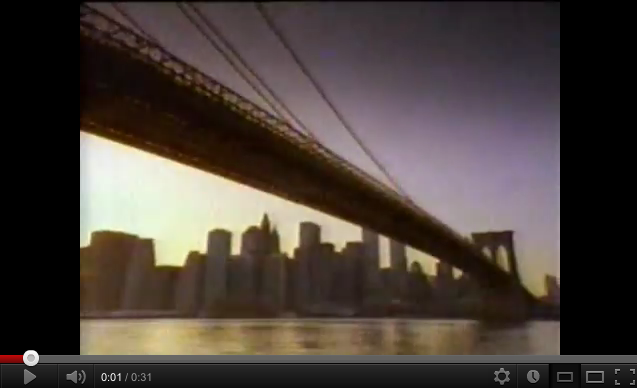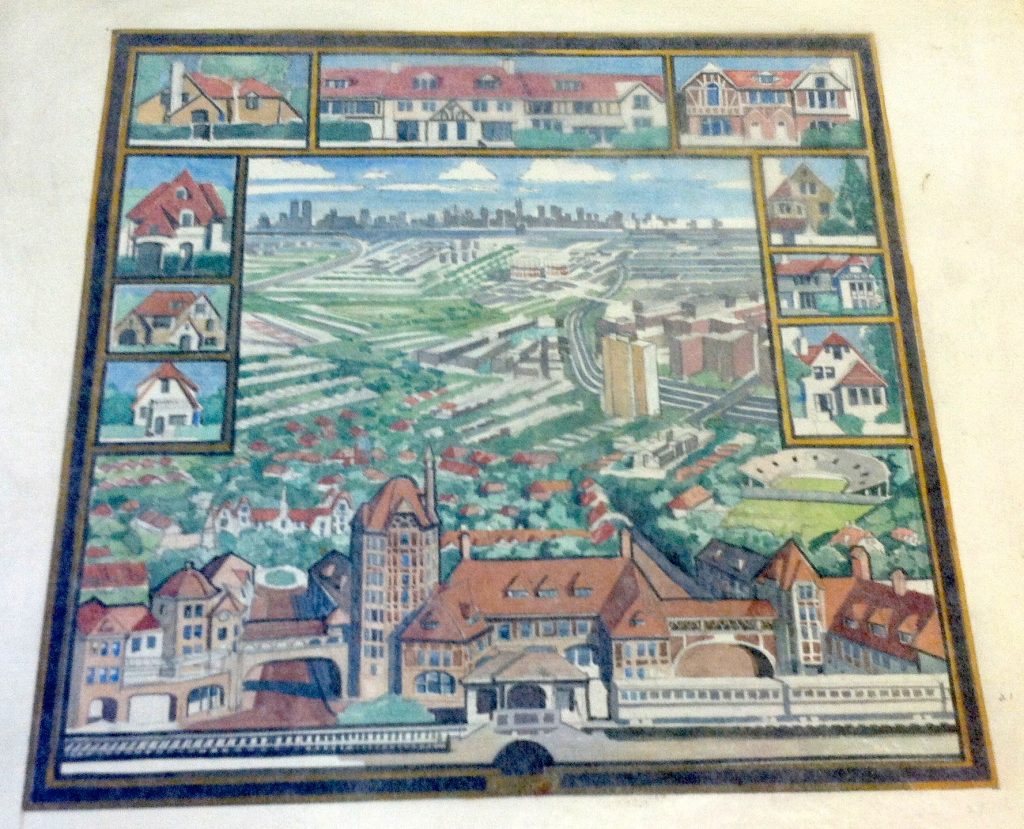
Millard Sheets, enamel panel of California (1 of 3), Mark Keppel High School, Alhambra, 1939. Photograph courtesy of Richard Yaussi
This week’s image comes from a fantastic new Flickr photostream by Richard Yaussi. In recent days I have been in touch with more Studio workers, social-media groups for former Home Savings employees, and individuals from all walks of life with more information to add to this research (and corrections for the list, which will soon get a makeover). I was even interviewed by a blog post about the San Jose Willow Glen Home Savings branch, and got an interview with a former branch employee in return, who helped save the interior murals when Washington Mutual wanted to paint them over.
I am thankful to continue to find such enthusiastic fans of this art and architecture, and my research on its place of Home Savings within the urban context of its communities!
This is Richard’s recent image of Mark Keppel High School in Alhambra, where enamel mosaics that Millard Sheets designed both echo some of the Home Savings work in their subject but differ dramatically in their style. (More on these panels, with photographs of all three, on the Alhambra Preservation Group site.)
These differences run through many of the early Sheets projects — some, like the 1954 centennial lithographs for American Trust Company (which was accompanied by an Ansel Adams book as well), seem to share the motifs and style of the later Home Savings bank work to a great extent, while others, like the Bullock’s Men Store mural reproduced in one of Sheets’s early art-show catalogs, seems radically different.
I recently found one of Millard’s résumés from 1963, when many of these early projects were still listed. Public, non-church buildings to be added to the “definitive” master list (and, in many cases, to be researched further) are:
Golden Gate International Exposition, San Francisco, CA, 1939, murals
Scripps College Art Building, Claremont, CA (date and specifics unknown)
Beverly Hills Tennis Club, Beverly Hills, CA (date and specifics unknown)
YMCA, Pasadena, CA, (date and specifics unknown)
Robinson’s Company, Los Angeles, CA, (date and specifics unknown)
South Pasadena Junior High School, South Pasadena, CA (date and specifics unknown)
Bullock’s Men’s Store, Los Angeles, CA (date and specifics unknown)
Air schools including Thunderbird #1 and #2 in Phoenix; Cal Aero, Ontario, CA; Air Cadet, St. Louis; Tex Rankin (flying) Schools, Visalia, CA; Dos Palos, CA; King City, CA; Uvalde, TX; Fort Stockton, TX (date and specifics unknown)
U.S. Department of Interior building, Washington, DC, 1946-1948, four panels on “The Negro’s Contribution in the Social and Cultural Development of America”
Lyman’s Restaurant, Los Angeles, CA, 1947-1948, glass mosaic
Melody Lane, Beverly Hills, CA, 1947-1948, puppet room
Beverly Hills Hotel, Beverly Hills, CA, 1947-1948, main lobby
Carnation Company offices, Hollywood, CA, 1948-1949
American Trust Company, Sacramento, CA, 1949, panels
Sequoia Room, Hody’s Lankershim, North Hollywood, CA, 1950
Mayo Clinic, Rochester, MN, 1953, mural on canvas
Pacific Clay Products (later Children’s Aid Society of California), 4th and Bixel, Los Angeles, 1953, interior design
Van Nuys Savings & Loan, Van Nuys, CA, 1954, mural on canvas
Bob’s Restaurant, Phoenix, CA, 1955, ceramic tiles on exterior
“The Springs” restaurant, Palm Springs, CA, 1956, three ceramic tile panels
Guaranty Savings and Loan, 2400 Broadway, Redwood City, CA, 1957 mural – painted over
Guaranty Savings and Loan, 200 Stockton St, San Francisco, CA, 1957, mosaic
St. Francis High School, La Cañada, CA, 1957, mural
First Federal Savings and Loan, Dallas, TX, 1958, mural
Bankers Life Insurance Company, Lincoln, NE, 1959, mural and mosaic
Tyler Bank and Trust, Tyler, TX, 1959, mosaic
Robert C. Wian Enterprises, Glendale, CA, 1960, executive offices – mosaic
Valhalla Mausoleum, North Hollywood, CA, 1960, mosaic
United Savings and Loan, Inglewood, CA, 1960, mural
Bankers National Life Insurance Company, Cincinnati, OH, 1960 interior mosaic
Victory Savings and Loan, North Hollywood, CA, 1960, mural
United Savings and Loan, Westchester, CA, 1960, mural
Willow Brook Country Club, Tyler, TX, 1962, mural
And of course information about these sites is much appreciated!
*
Your faithful historian/researcher/blogger will away for Passover, so the blog will not get a new post until around April 20.



